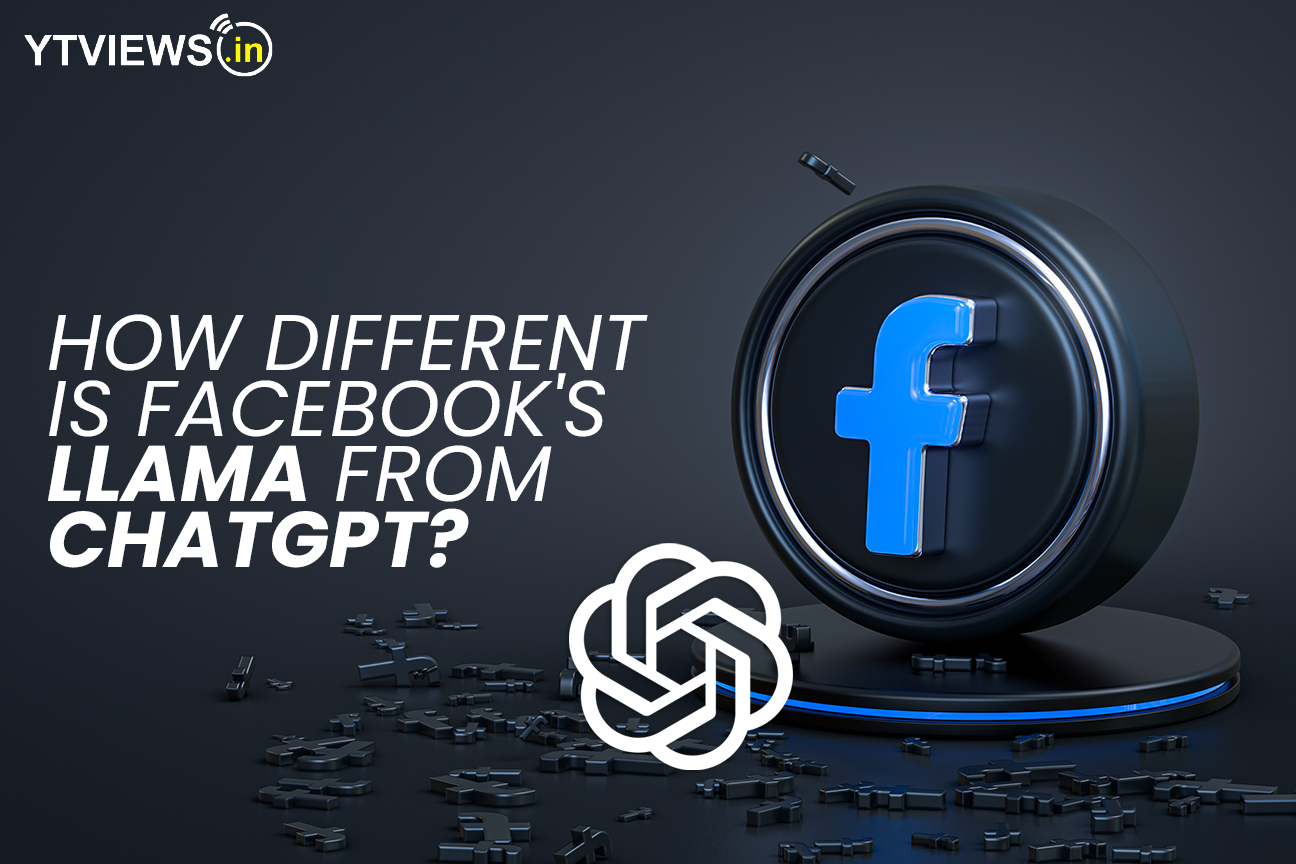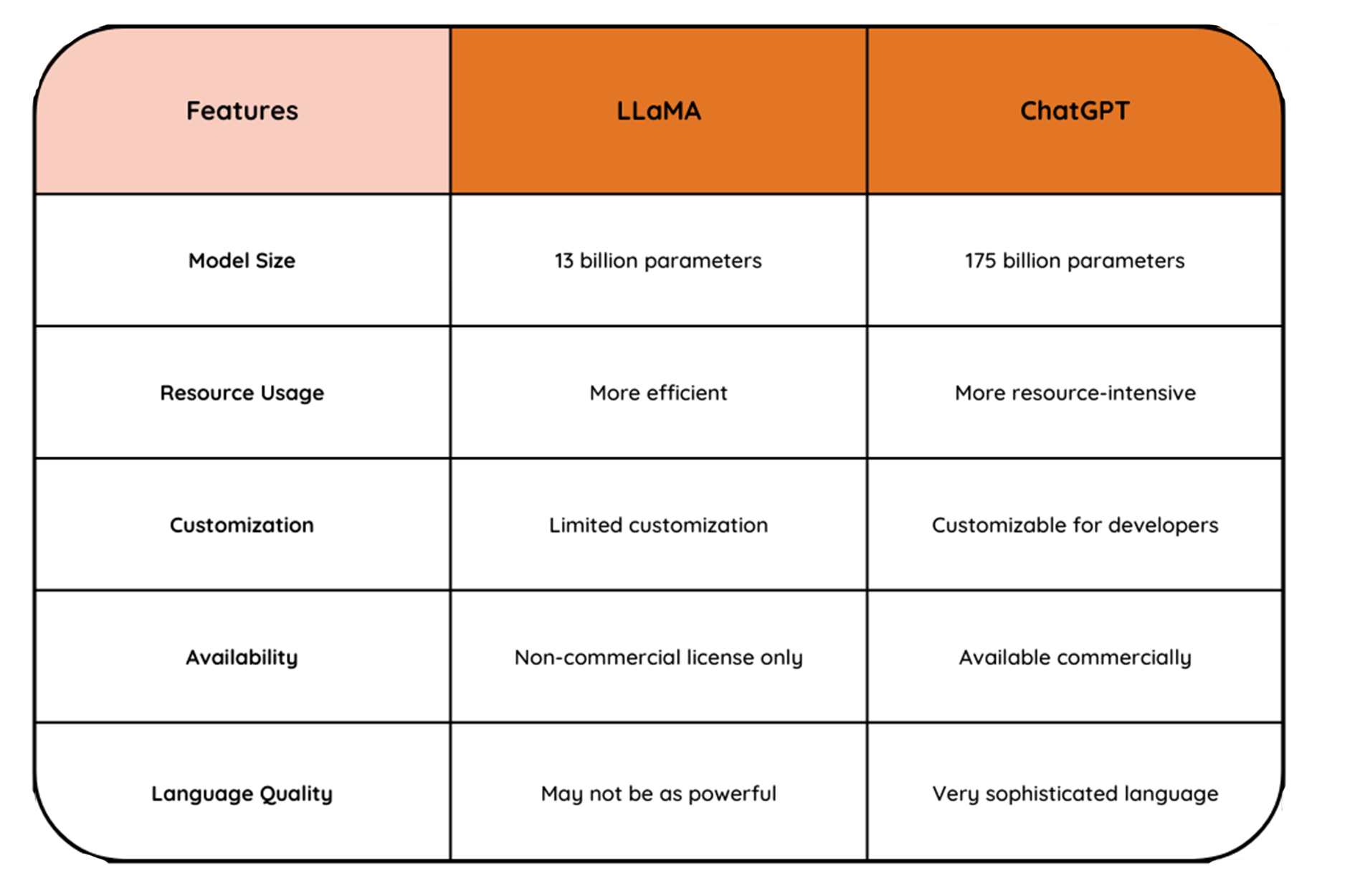How different is Facebook LlaMa from ChatGpt?

Artificial intelligence (AI) has emerged as a significant technology with numerous applications in recent years. The creation of large language models (LLMs) that are able to produce text that is comparable to that of a human being is one of the most important areas of AI research. ChatGPT from OpenAI and LLaMA from Meta are two of the most well-known LLMs.
Two LLMs that are utilized to produce text that resembles that of a human are LLaMA and ChatGPT. Because both models are able to produce language that is coherent and appropriate to the context, they are ideal for a wide range of applications. Despite the fact that they have a lot in common, there are some significant differences that set them apart.
A relatively recent LLM, LLaMA, which stands for Large Language Model Meta AI, was recently introduced by Meta. It is intended to be more user-friendly and less resource-intensive than other models because it is designed to be more efficient. LLaMA’s availability to researchers and other organizations under a non-commercial license is one of its most notable features, making it easier for them to use it for their work.
ChatGPT, on the other hand, is an LLM that is widely acknowledged as one of the most advanced generative AI systems currently available. OpenAI, a prominent AI research organization, is responsible for its creation. ChatGPT is well-known for its capacity to generate text written in natural language that is frequently difficult to distinguish from the human-authored text.

A transformer, a type of artificial neural network, serves as the foundation for both LLaMA and ChatGPT. In machine learning, transformers are used to analyze a lot of data and then use that data to make predictions or make new content.
The size of LLaMA and ChatGPT is their primary distinction. LLaMA is smaller than many other LLMs because it is designed to be more resource-efficient and less resource-intensive than other models. It has fewer parameters than some other models, but its higher efficiency makes up for this.
On the other hand, ChatGPT is a huge model with more than 175 billion parameters. As a result, it is one of the most extensive LLMs currently available. The model’s large size means that it needs a lot of processing power to run, but it also means that it can make very complicated and sophisticated language.
Conclusion: In conclusion, two of the most well-known large language models at this time are LLaMA and ChatGPT. They can be used for a variety of purposes and each has its own distinct set of advantages and disadvantages. Because it is made to be easier to use and more efficient, LLaMA is great for applications where resource usage is a big deal. On the other hand, ChatGPT is well-known for its capacity to generate extremely complex and nuanced language. As a result, it is an excellent choice for applications in which natural language generation is an essential component.
In the end, the user’s particular requirements will determine which of LLaMA and ChatGPT to choose. The size, resource consumption, degree of customization, and availability of each model should all be taken into account by researchers and developers. Users can select the model that best meets their requirements by carefully weighing the benefits and drawbacks of each.
Related Posts

Instagram Implements Advanced Protections for Teen Users.

5 Skills to Become a Successful Social Media Marketer

LinkedIn Adds AI Training Opt-out Option

What Video Editing Software Do Youtubers Use in 2024?

How VoIP Services are changing the Way We Make Calls






































